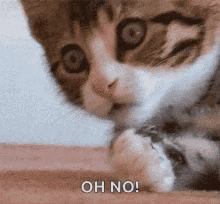
Composite Exam Review Quiz (Topic 1 & 2)
Quiz by Fred Spies
Feel free to use or edit a copy
includes Teacher and Student dashboards
Measure skillsfrom any curriculum
Tag the questions with any skills you have. Your dashboard will track each student's mastery of each skill.
- edit the questions
- save a copy for later
- start a class game
- automatically assign follow-up activities based on students’ scores
- assign as homework
- share a link with colleagues
- print as a bubble sheet
- Q1
Which of the following statements completes the sentence? When rolling a dice labeled one through eight, the_____
…the number eight has the same theoretical probability as the number one.
...theoretical probability is always more than the experimental probability.
...theoretical probability is always less than the experimental probability.
…number four will appear more than the number two.
300s - Q2
Which of the following statements is true? When a die is thrown, the sample space of...
...getting an even number greater than 4 and a number greater than 3 is {4, 6}
...getting a number less than 4 but not a multiple 2 is {1, 2, 3}
...getting a number less than 4 but not a multiple 2 is {1, 3}
300s - Q3
In an experiment, a dice is thrown. If the dice lands on a prime number, a coin is flipped. What is the sample space?
{1T, 1H, 2T, 2H, 3T, 3H, 4T, 4H, 5T, 5H, 6T, 6H}
{1, 2H, 2T, 3H, 3T, 4, 5H, 5T, 6}
{1H, 1T, 2, 3, 4H, 4T, 5H, 5T, 6}
300s - Q4
In an experiment, a coin is flipped.If the coin lands on tails, it's flipped for a second time. What's the sample space?
{TH, TT, H}
{HH, HT, TT, TH}
{HH, HT, T}
300s - Q5
Five names are put in a hat. three names are drawn without replacement. How many outcomes are there?
12
15
16
60
300s - Q6
A spinner numbered 1, 2, 3, and, 4 is spun three time. How many outcomes are possible?
12
4
16
64
300s - Q7
A spinner with six equal sections labeled 1 through 6 is spun 5 times. It landed on "three" two times. Which statement best describe the experimental and theoretical probability of the arrow landing on "three"?
The theoretical probability is 1/6 and the experimental probability is 2/5.
The theoretical probability is 1/6 and the experimental probability is 1/6.
The theoretical probability is 2/5 and the experimental probability is 1/6.
300s - Q8
A coin was tossed twelve times. It landed on heads 4 times. What is the experimental probability of not landing on tails?
4/12
1/2
8/12
50%
300s - Q9
A bag of balls contains 2 Blue, 2 Red, 2 Green, and 2 Yellow balls. According to table below, experimental P(Red ball) = ...
10/50
12/50
1/4
2/8
300s - Q10
A bag of balls contains 2 Blue, 2 Red, 2 Green, and 2 Yellow balls. what is the theoretical P(Yello') = ...
15/50
3/4
1/4
2/8
300s - Q11
A coin is flipped 3 times. What is the probability of it never landing on Heads?
P(HHH) = 1/8
P(HHH) = 1/2
P(HHH) = 1/6
P(TTT) = 1/8
300s - Q12
If a coin is flipped three times, what is the Theoretical probability that the coin will land on Heads at least 2 times?
P(HH) = 1/2
None of the above
P(HH) = 1/8
P(HH) = 1/4
300s - Q13
A coin is flipped three times. What are the odds of the coin landing on heads at least 2 times?
1 : 3
1 : 1
1 : 4
1 : 8
300s - Q14
If a coin is flipped three times, what are the odds that the coin will land on Tails at most two times?
1/8
7/8
7 : 1
1 : 7
300s - Q15
Students can choose one fruit for lunch. According to the results below, which one is closest to the theoretical probability?
Apple: 3
Oranges: 5
Pears: 7
Apple
Pear
Orange
300s
